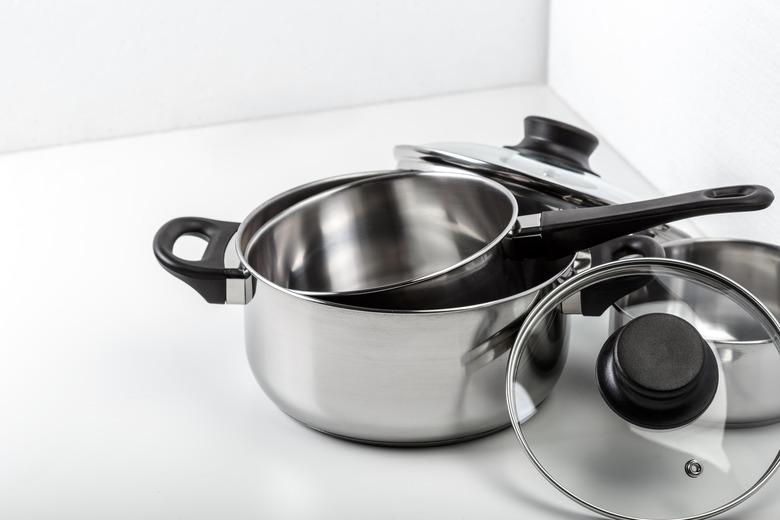How To Remove Pitting Stains From Stainless Steel Cookware
Stainless steel is easier to keep clean than regular steel, and it's more rust resistant. However, the metal can definitely get stained, no matter what impression you get from its name. It's an alloy of steel and chromium, which is one of the hardest metals. The chromium combines with oxygen to form a layer of chromium oxide, a type of rust that prevents more damaging iron oxide rust from forming. Chlorine can damage that layer and cause a condition called pitting, and pitted stainless steel can't be repaired.
What Causes Pitted Stainless Steel?
Chlorine and chloride salts are responsible for metal pitting on stainless steel. They cause a breakdown of the passive chromium oxide layer on the metal, and once the pitting starts, it can spread rapidly. The Stainless Steel Information Center advises that several substances that contain chlorides can cause pitting, which can form deep crevices and even spread all the way through the metal.
Substances responsible for pitting include sodium chloride, which is common table salt, and sodium hypochlorite, which is the active ingredient in chlorine bleach. This means that simply filling a stainless steel pot with salty water is likely to cause pitting, even if you don't heat it. It may not happen the first time, but if you repeatedly fill your pot with salty water, pitting is likely to occur.
How to Avoid Pitting
You can't get rid of pitting once it occurs, so the best strategy is to avoid it in the first place. You may have to modify your cooking routine and your cleaning habits to do this. This is especially important once you notice that pitting has already occurred, because once it starts, it may not be long before the cookware develops pinholes and is unusable.
Besides chlorine, the pitting reaction requires oxygen, so you can avoid pitting by adding salt only after water has come to a boil. At that temperature, there isn't enough oxygen in the water for the reaction to occur. It's also important to avoid the use of bleach and other cleaners containing chlorine, including (and especially) muriatic acid, when cleaning your stainless steel cookware.
Other Types of Stainless Steel Stains
Besides pitting, stainless steel can sustain other types of stains and discoloration. None of these are as serious as pitting, and you can usually remove them, but not by scrubbing with a steel wool or an abrasive cleaner. Abrasives create small scratches in the surface layer and expose the steel underneath, which can form iron oxide rust. You can remove iron rust by wiping the pan down with a nonabrasive cloth or sponge and a paste of baking soda and water, or you can use Bar Keepers Friend®.
Black spots on stainless steel cookware are usually the result of the polishing process, and they are most common on new pots and pans. Remove these by pouring olive oil on the deposits, allowing it to sit for a while, then washing the pot with dish soap, warm water and a nonabrasive sponge or cloth.
One of the most common stainless steel discoloration causes is hard water. It leaves calcium deposits on stainless steel that create a dull, whitish film that you can't remove with soap and water. The best way to get rid of hard water stains is to soak the pot in a 50/50 solution of water and household vinegar, warming the solution on the stove to allow the vinegar to break down the calcium salts more quickly. Once the solution is warm, dump it out and wash the affected cookware with soap and water, and it should be shiny again.
